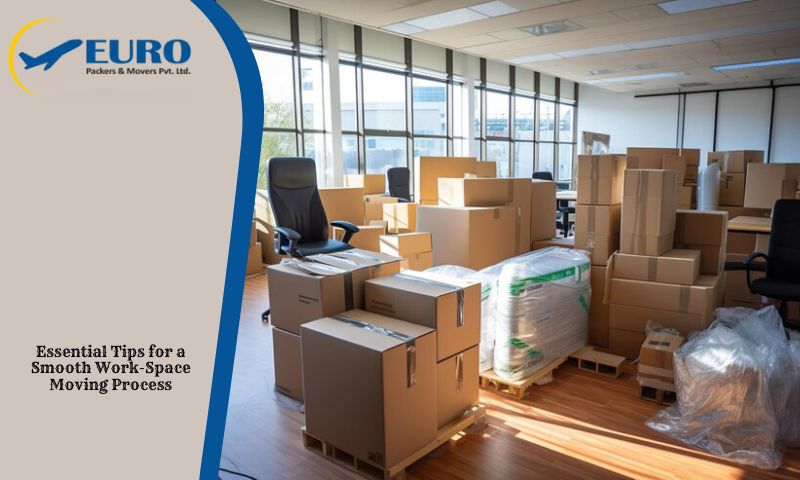Welcome To Euro Packers & Movers - Get a Quote

Moving your workplace can be difficult, with logistical issues and business inconveniences. By preparing and executing a smooth transition, you can minimize team downtime and the stress of Office Shifting.
Here are crucial ideas to help you handle office relocation, whether you’re expanding to accommodate expansion or seeking a more strategic location.
The secret to a successful office move is careful planning. Starting early gives you time to organize, pack, and coordinate the move. Schedule all projects, deadlines, and milestones on a thorough timetable. To maintain responsibility and cooperation, assign tasks to the best Packers and Movers members or departments.
Assess your present office space and needs for a new location before moving. Take into account square footage, layout, facilities, and accessibility. This assessment will help you evaluate potential sites and guarantee the new space fulfills your business and staff demands.
Professional moving services can simplify the move and reduce team stress. Find reputable office relocation movers and get numerous quotations to compare services and prices. Check that the mover has enough insurance and a good reputation.
Create a thorough floor plan for the new office to maximize space and arrange furniture, equipment, and infrastructure. Take into account departmental proximity, workflow efficiency, and ergonomic design. Share the floor plan with your moving team and staff to simplify unpacking and setup at the new location.
Remove superfluous objects and old equipment to organize and streamline your workspace. Inventory furniture, supplies, and materials to find items to donate, recycle, or dispose of. Moving fewer goods reduces expenses and simplifies packing and unpacking.
Clear and timely communication must keep all stakeholders informed and involved throughout office relocation. Meetings, emails, and internal platforms are used to update, discuss, and solicit employee input. Openness and transparency foster team trust and cooperation.
Coordinate phone line, internet, and other technology infrastructure transfers to ensure IT and telecom service continuity. To minimize transition downtime, work with your IT department or service provider to schedule equipment disconnection and reinstallation, data backups, and system testing.
Organize and mark boxes by department, function, or priority with a methodical packing strategy. Protect fragile items and equipment during transit with sturdy packaging and padding. Encourage staff to pack and label their items in containers to make unloading at the new office easier.
Prioritise office assets and sensitive data security during transfer. Protect sensitive documents, electronics, and valuables during packing, loading, and transit. Coordinate with building management or security to allow authorised individuals to enter the new office.
Prepare for post-move concerns and create a support strategy. During the transition, allocate resources for unpacking, furniture assembly, IT troubleshooting, and employee concerns. Ask employees for input to improve your office relocation procedure for future migrations.
A flawless office move needs careful planning, good communication, and proactive logistics and resource management. These crucial tips and the help of professional movers and internal stakeholders will help you minimize disruptions and successfully transfer to your new office. Relocation offers opportunities for growth and progress, so make it a good experience for your company.
Direction: Click Here